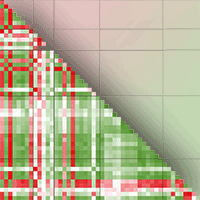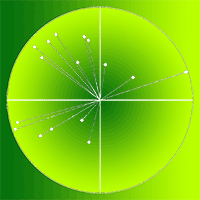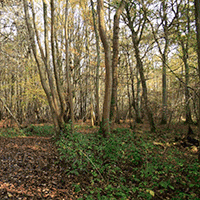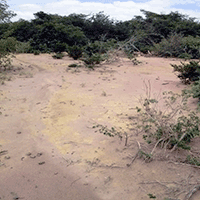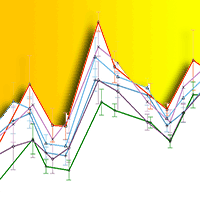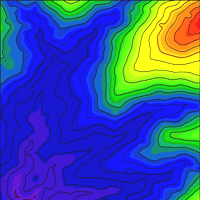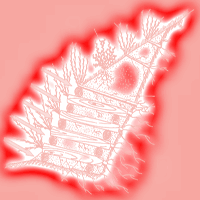A quantitative analysis of pedo-physiological indicators aimed at determining changes in the soil attributable to the effects of spruce plantations was done. The study was conducted at eight sites in central and north-western Croatia where spruce plantations were planted in the late 20th century. At each site, a pedological profile was opened within the spruce plantation and the endo-morphological parameters of the soil were determined. Composite soil samples from two depths (0-10 cm and 10-20 cm) and from the forest floor were taken in the spruce plantation and compared with samples taken at plots covered by natural vegetation (natural stands) located in the surroundings. The following pedo-physiographic indicators were measured on the collected soil samples: quantity of forest floor, particle size distribution of soil, pH values in H2O and in CaCl2 aqueous solution (concentration 0.01 mol dm-3), content of Corg, content of Ntot and content of bioavailable nutrients (using the Mehlich III method). The results showed that the forest floor had a higher mass in the spruce plantations than in natural stands. The mineral soil showed clear trends of influence of the spruce plantations on soil in terms of reduced pH values. Most plots in the spruce plantations showed a lower nitrogen content in the soil, a higher C/N ratio and lower content of bioavailable phosphorus. This study provides an insight into the amelioration effects of spruce plantations on soil, and represent a reliable basis for decision-making in planning specific interventions in terrestrial ecosystems, such as the establishment of new forest plantations.
Keywords
, , ,
Citation
Perković I, Pernar N, Roje V, Bakšić D, Baneković M (2019). Impacts of Norway spruce (Picea abies L., H. Karst.) stands on soil in continental Croatia. iForest 12: 511-517. - doi: 10.3832/ifor3023-012
Academic Editor
Giustino Tonon
Paper history
Received: Dec 13, 2018
Accepted: Aug 26, 2019
First online: Dec 02, 2019
Publication Date: Dec 31, 2019
Publication Time: 3.27 months
© SISEF - The Italian Society of Silviculture and Forest Ecology 2019
Open Access
This article is distributed under the terms of the Creative Commons Attribution-Non Commercial 4.0 International (https://creativecommons.org/licenses/by-nc/4.0/), which permits unrestricted use, distribution, and reproduction in any medium, provided you give appropriate credit to the original author(s) and the source, provide a link to the Creative Commons license, and indicate if changes were made.

Breakdown by View Type
(Waiting for server response...)
Article Usage
Total Article Views: 42571
(from publication date up to now)
Breakdown by View Type
HTML Page Views: 36562
Abstract Page Views: 2618
PDF Downloads: 2604
Citation/Reference Downloads: 2
XML Downloads: 785
Web Metrics
Days since publication: 2220
Overall contacts: 42571
Avg. contacts per week: 134.23
Article Citations
Article citations are based on data periodically collected from the Clarivate Web of Science web site
(last update: Mar 2025)
Total number of cites (since 2019): 1
Average cites per year: 0.14
Publication Metrics
by Dimensions ©
Articles citing this article
List of the papers citing this article based on CrossRef Cited-by.
(1)
Augusto L, Ranger J, Binkley D, Rothe A (2002)Impact of several common tree species of European temperate forests on soil fertility. Annals of Forest Science 59: 233-253.
CrossRef |
Gscholar
(2)
Bagherzadeh A, Brumme R, Beese F (2008)Impact of tree species on nutrient stocks in the forest floors of a temperature forest ecosystem. Pakistan Journal of Biological Sciences 11 (9): 1258-1262.
CrossRef |
Gscholar
(3)
Batjes NH (1996)Total carbon and nitrogen in the soils of the world. European Journal of Soil Science 47: 151-163.
CrossRef |
Gscholar
(4)
Berger TW, Berger P (2012)Greater accumulation of litter in spruce (
Picea abies) compared to beech (
Fagus sylvatica) stands is not a consequence of the inherent recalcitrance of needles. Plant and Soil 385: 349-369.
CrossRef |
Gscholar
(5)
Berger TW, Köllensperger G, Wimmer R (2004)Plant-soil feedback in spruce (
Picea abies) and mixed spruce-beech (
Fagus sylvatica) stands as indicated by dendrochemistry. Plant and Soil 264: 69-83.
CrossRef |
Gscholar
(6)
Berg B, McClaugherty C (2008)Plant litter: decomposition, humus formation, carbon sequestration. In: “Climatic Environment” (2nd edn). Springer, Berlin Heidelberg, Germany, pp. 143-170.
Gscholar
(7)
Bergmann W (1988)Ernährungsstörungen bei Kulturpflanzen: Entstehung, visuelle und analytische Diagnose [Nutritional disorders in crops: development, visual and analytical diagnosis]. Gustav Fisher Verlag, Jena, Germany, pp. 381. [in German]
Gscholar
(8)
Binkley D, Valentine D (1991)Fifty-year biogeochemical effects of green ash, white pine, and Norway spruce in a replicated experiment. Forest Ecology and Management 40: 13-25.
CrossRef |
Gscholar
(9)
Cerli CH, Celi L, Johansson MB, Kögel-Knabner I, Rosenqvist L, Zanini E (2006)Soil organic matter changes in a spruce chronosequence on Swedish former agricultural soil. I. Carbon and lignin dynamics. Soil Science 171 (11): 837-849.
CrossRef |
Gscholar
(10)
Fabiánek T, Menšík L, Tomášková I, Kulhavý J (2009)Effects of spruce, beech and mixed commercial stand on humus conditions of forest soils. Journal of Forest Science 55 (3): 119-126.
CrossRef |
Gscholar
(11)
FAO (2006)Guidelines for soil description (4th edn). Food and Agriculture Organization of the United Nation, Rome, Italy, pp. 21-32.
Gscholar
(12)
Galvan P, Ponge JF, Chersich S, Zanella A (2008)Humus components and soil biogenic structures in Norway spruce ecosystems. Soil Science Society of America Journal 72 (2): 548-557.
CrossRef |
Gscholar
(13)
Gartner TB, Cardon ZG (2004)Decomposition dynamics in mixed-species leaf litter. Oikos 104: 230-246.
CrossRef |
Gscholar
(14)
Hagen-Thorn A, Callesen I, Armolaitis K, Nihlgård B (2004)The impact of six European tree species on the chemistry of mineral topsoil in forest plantation on former agricultural land. Forest Ecology and Management 195: 373-384.
CrossRef |
Gscholar
(15)
Haider K (1992)Problems related to the humification processes in soils of the temperate climate. In: “Soil Biochemistry 7” (Bollag JM, Strotzky G eds). M. Dekker, New York, USA, pp. 55-94.
Online |
Gscholar
(16)
Hansen K, Vesterdal L, Schmidt IK, Gundersen P, Sevel L, Bastrup-Birk A, Pedersen LB, Bille-Hansen J (2009)Litterfall and nutrient return in five tree species in a common garden experiment. Forest Ecology and Management 257: 2133-2144.
CrossRef |
Gscholar
(17)
ISO-10390 (2005)Soil quality - Determination of pH. ISO, Genève, Switzerland, pp. 1-7.
Gscholar
(18)
ISO-10693 (1995)Soil quality - Determination of carbonate content - Volumetric method. ISO, Genève, Switzerland, pp 1-7.
Gscholar
(19)
ISO-10694 (1995)Soil quality - Determination of organic and total carbon after dry combustion (elementary analysis). ISO, Genève, Switzerland, pp 1-7.
Gscholar
(20)
ISO-11277 (2009)Soil quality - Determination of particle size distribution in mineral soil material - Method by sieving and sedimentation. ISO, Genève, Switzerland, pp. 1-34.
Gscholar
(21)
ISO-11464 (1994)Soil quality - Pretreatment of samples for physico-chemical analyses. ISO, Genève, Switzerland, pp. 1-11.
Gscholar
(22)
ISO-13878 (1998)Soil quality - Determination of total nitrogen content by dry combustion (elemental analysis). ISO, Genève, Switzerland, pp. 1-5.
Gscholar
(23)
Johnson DW, Curtis PS (2001)Effects of forest management on soil C and N storage: meta analysis. Forest Ecology and Management 140: 227-238.
CrossRef |
Gscholar
(24)
Johnson-Maynard JL, McDaniel PA, Ferguson DE, Falen AL (1998)Changes in soil solution chemistry of andisols following invasion by Bracken fern. Soil Science 163 (10): 814-821.
CrossRef |
Gscholar
(25)
Klimo E (2000)Stress factors in the ecosystems of Norway spruce monocultures, induced by changed soil properties and nutrient cycling. Ekologia 19 (1): 113-129.
Gscholar
(26)
Klimo E, Kulhavy J (2006)Norway spruce monocultures and their transformation to close-to-nature forests from the point of view of soil changes in the Czech Republic. Ekológia 25 (1): 27-43.
Online |
Gscholar
(27)
Kostić O, Mitrović M, Jarić S, Djurdjević L, Gajić G, Pavlović M, Pavlović P (2012)The effects of forty years of spruce cultivation in a zone of beech forest on Mt. Maljen (Serbia). Archives of Biological Sciences 64 (3): 1181-1195.
CrossRef |
Gscholar
(28)
Kostić O, Jarić S, Gajić G, Pavlović D, Marković M, Mitrović M, Pavlović P (2016)The effects of Douglas Fir monoculture on stand characteristics in a zone of Montane beech forest. Archives of Biological Sciences 68 (00): 753-766.
CrossRef |
Gscholar
(29)
Kubartová A, Ranger J, Berthelin J, Beguiristain T (2009)Diversity and decomposing ability of saprophytic fungi from temperate forest litter. Microbial Ecology 58 (1): 98-107.
CrossRef |
Gscholar
(30)
Lindsay WL, Schwab AP (2008)The chemistry of iron in soils and its availability to plants. Journal of Plant Nutrition 5 (1982): 821-840.
CrossRef |
Gscholar
(31)
Lesná J, Kulhavy J (2003)Evaluation of humus conditions under different forest stands: beech
vs. spruce dominated forest stands. Ekológia 22 (3): 47-60.
Gscholar
(32)
Mareschal L, Bonnaud P, Turpault MP, Ranger J (2010)Impact of common European tree species on the chemical and physicochemical properties of fine earth: an unusual pattern. European Journal of Soil Science 61: 14-23.
CrossRef |
Gscholar
(33)
Mehlich A (1984)Mehlich-3 soil test extractant: a modification of Mehlich-2 extractant. Communications in Soil Science and Plant Analysis 15 (12): 1409-1416.
CrossRef |
Gscholar
(34)
Meiwes KJ, Meesenburg H, Bartens H, Khanna PPA (2002)Akkumulation von Auflagehumus im Solling Mögliche Ursachen und Bedeutung für den Nährstoffkreislauf [Accumulation of humus in the litter layer of forest stands at Solling. Possible causes and significance for the nutrient cycling]. Aus Forst und Holz 57: 428-433. [in German]
Gscholar
(35)
Moukoumi J, Munier-Lamy C, Berthelin J, Ranger J (2006)Effect of tree species substitution on organic matter biodegradability and mineral nutrient availability in temperate topsoil. Annals of Forest Science 63: 763-771.
CrossRef |
Gscholar
(36)
Oršanić M, Vukelić J, Pernar N (2000)The possibility of converting spruce monocultures into autochthonous stands in Croatia. In: “Spruce Monocultures in Central Europe - Problems and Prospects” (Klimo E, Hager H, Kulhavý J eds). EFI Proceedings 33, pp. 189-197.
Gscholar
(37)
Penízek V, Zádorova T (2012)Soil toposequence under man-planted vegetation in the Krkonoše Mts., Czech Republic. Soil and Water Research 7 (4): 138-50.
CrossRef |
Gscholar
(38)
Perić S, Orlić S, Dokuš A (2006)Pregled osnovanih pokusa provenijencija i kultura četinjača Šumarskog instituta, Jastrebarsko [An overview of established provenance test and conifer cultures of the Forest Reaserch Institute Jastrebasrsko]. Radovi Šumarskog instituta Jastrebarsko 41 (1-2): 115-126. [in Croatian]
Gscholar
(39)
Perković I, Pernar N, Vrbek B, Bakšić D, Pilaš I, Presečan M (2007)Utjecaj kulture obične smreke na tlo [The impact of Norway Spruce on soil]. Radovi Šumarskog instituta Jastrebarsko 42 (2): 95-108. [in Croatian]
Gscholar
(40)
Pernar N, Bakšić D, Perković I (2013)Terenska i laboratorijska istraživanja tla, priručnik za uzorkovanje i analizu [Soil survey field and laboratory methods, sampling and analysis methods]. Udžbenici Sveučilišta u Zagrebu, Šumarski fakultet Sveučilišta u Zagrebu, pp. 192. [in Croatian]
Gscholar
(41)
Pernar N, Vukelić J, Bakšić D, Baričević D, Perković I, Miko S, Vrbek B (2009)Soil properties in beech-fir forests on Mt. Medvednica (NW Croatia). Periodicum Biologorum 111 (4): 427-434.
Online |
Gscholar
(42)
Podrázsky V, Remeš J (2007)Changes of soil chemistry in the Norway spruce forest ecosystems of the middle altitudes. Scientia Agriculturae Bohemica 38 (1): 48-51.
Online |
Gscholar
(43)
Podrázsky V, Vacek Z, Kupka I, Vacek S, Treštík M, Cukor J (2018)Effects of silver fir (
Abies alba Mill.) on the humus forms in Norway spruce (
Picea abies (L.) H. Karst.) stands. Journal of Forest Science 64 (6): 245-250.
CrossRef |
Gscholar
(44)
Prietzel J, Bachmann A (2011)Changes in soil organic C and N stocks after forest transformation from Norway spruce and Scots pine into Douglas fir, Douglas fir/spruce, or European beech stands at different sites in Southern Germany. Forest Ecology and Management 269: 134-148.
CrossRef |
Gscholar
(45)
Prudhomme GO, Lamhamedi MS, Benomar L, Rainville A, DeBlois J, Bousquet J, Beaulieu J (2017)Ecophysiology and growth of white spruce seedlings from various seed sources along a climatic gradient support the need for assisted migration. Frontiers in Plant Science 8: 2214.
CrossRef |
Gscholar
(46)
Šegota T, Filipčić A (2003)Köppenova podjela klima i Hrvatsko nazivlje [Köppen’s classification of climates and the problem of corresponding Croatian terminology]. Geoadria 8 (1): 17-37. [in Croatian]
CrossRef |
Gscholar
(47)
Smal H, Olszewska M (2008)The effect of afforestation with Scots pine (
Pinus sylvestris L.) of sandy post arable soils on their selected properties. II. Reaction, carbon, nitrogen and phosphorus. Plant and Soil 305: 171-187.
CrossRef |
Gscholar
(48)
Swift MJ, Heal OW, Anderson JM (1979)Decomposition in terrestrial ecosystems. Blackwell Scientific Publications. Oxford, UK, pp. 372.
Online |
Gscholar
(49)
Vanmechelen L, Groenemans R, Van Ranst E (1997)Forest soil conditions in Europe. Results of a large scale soil survey. Technical Report, EC, UN/ECE, Ministry of the Flemish Community, Brussels, Belgium and Geneva, Switzerland, pp. 254.
Gscholar
(50)
Vesterdal L, Schmidt IK, Callesen I, Nilsson LO, Gundersen P (2008)Carbon and nitrogen in forest floor and mineral soil under six common European tree species. Forest Ecology and Management 255: 35-48.
CrossRef |
Gscholar
(51)
Wood M (1995)Environmental soil biology. In: “Soil formation and development” (2nd edn). Springer, Netherlands, pp. 66-97.
Online |
Gscholar


